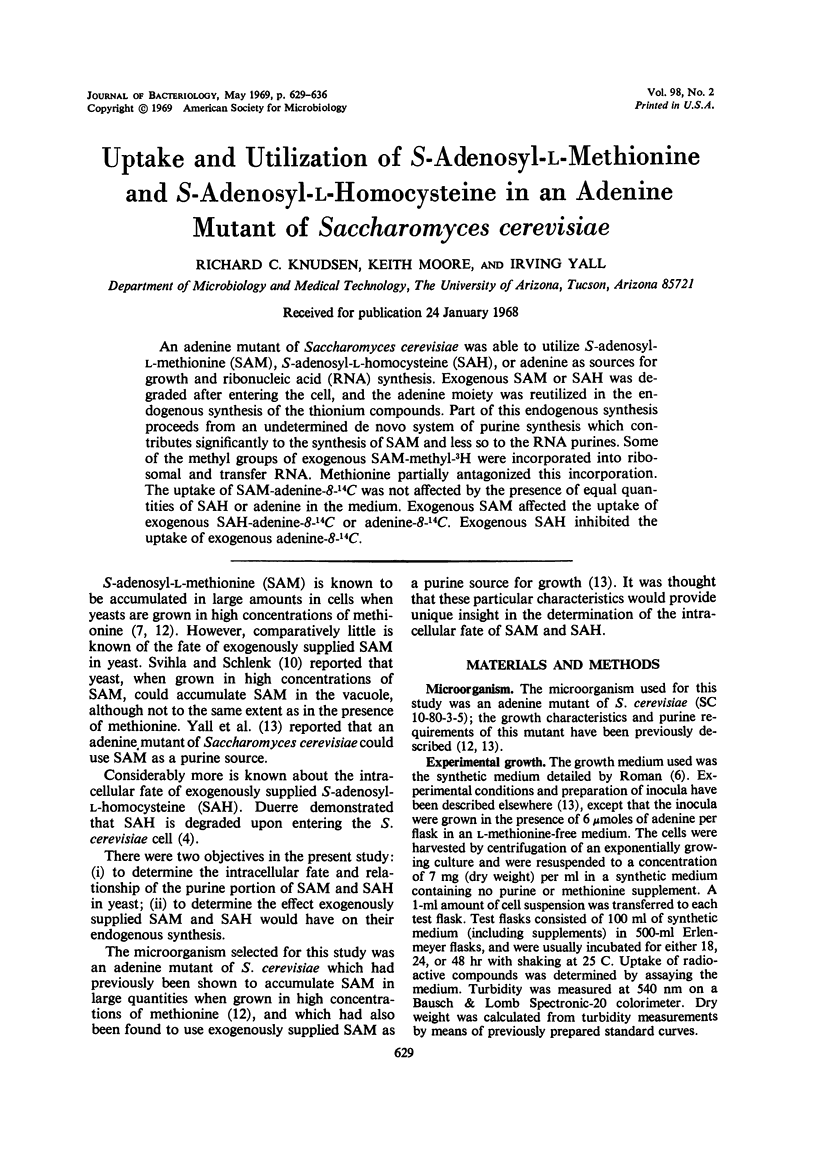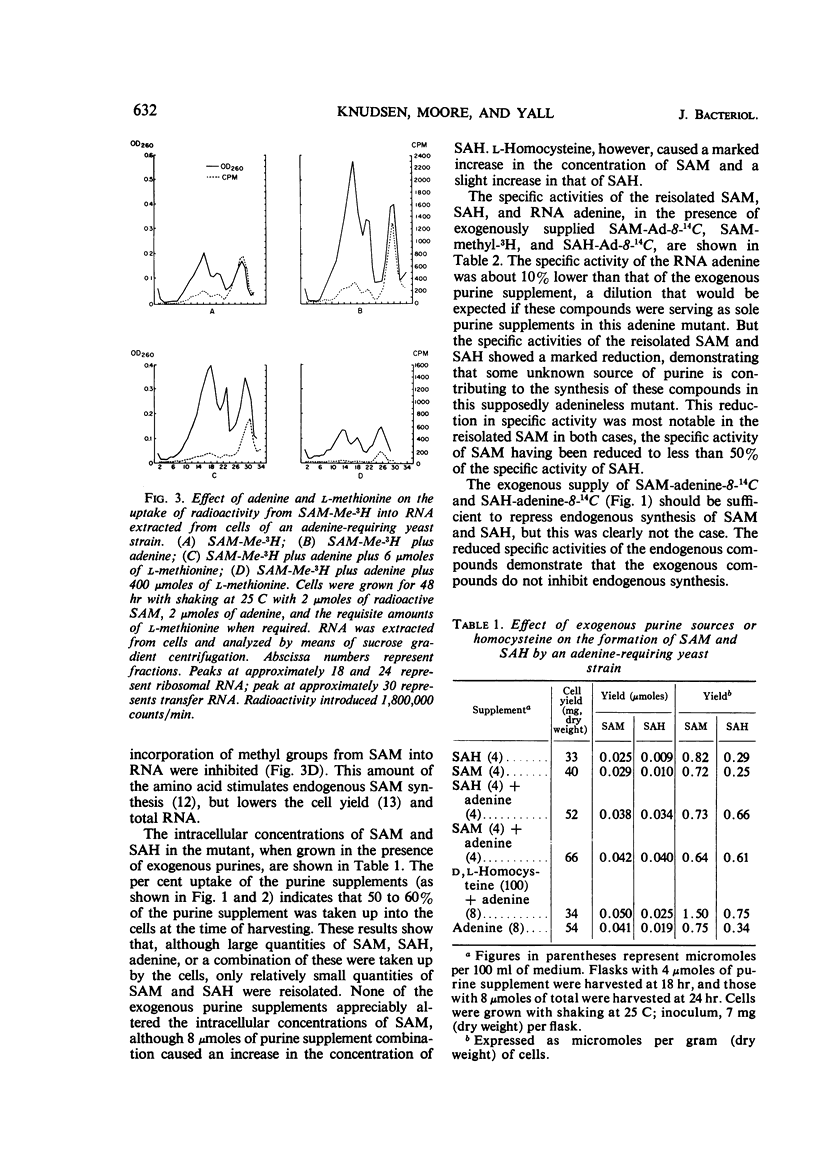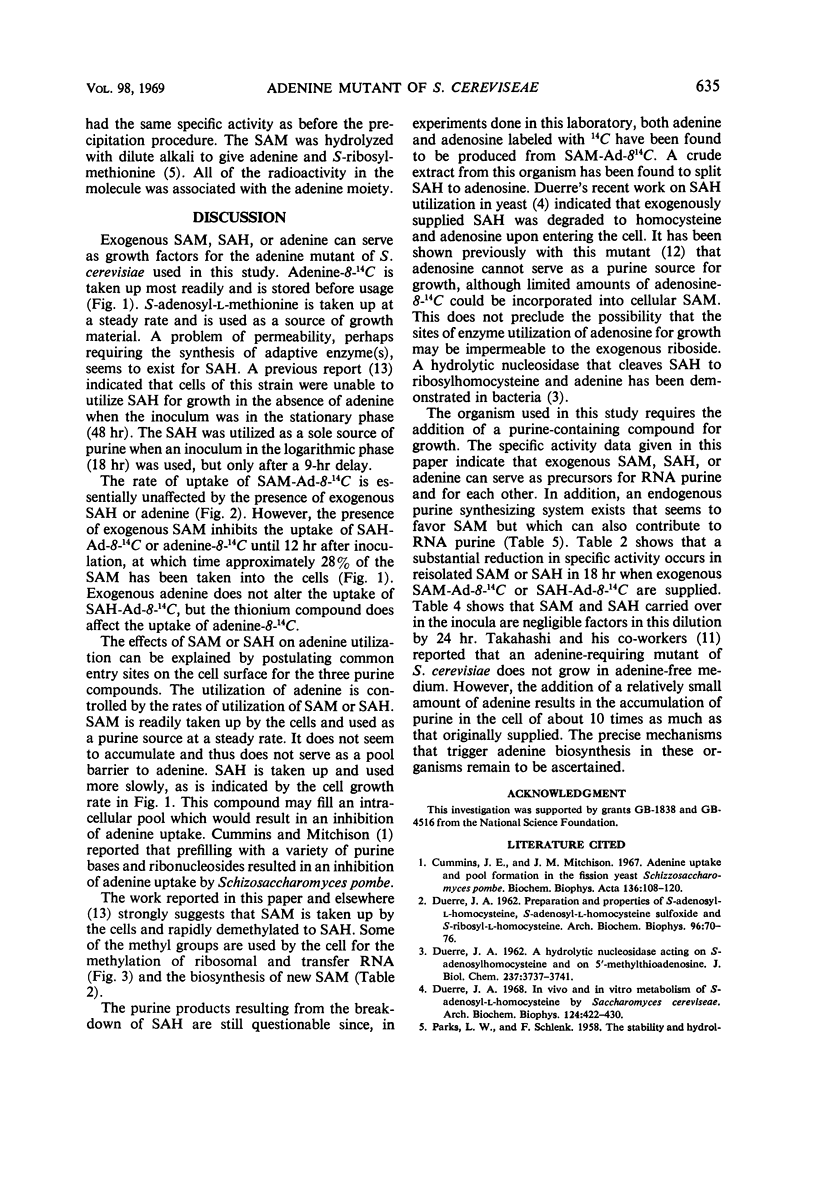Abstract
An adenine mutant of Saccharomyces cerevisiae was able to utilize S-adenosyl-l-methionine (SAM), S-adenosyl-l-homocysteine (SAH), or adenine as sources for growth and ribonucleic acid (RNA) synthesis. Exogenous SAM or SAH was degraded after entering the cell, and the adenine moiety was reutilized in the endogenous synthesis of the thionium compounds. Part of this endogenous synthesis proceeds from an undetermined de novo system of purine synthesis which contributes significantly to the synthesis of SAM and less so to the RNA purines. Some of the methyl groups of exogenous SAM-methyl-3H were incorporated into ribosomal and transfer RNA. Methionine partially antagonized this incorporation. The uptake of SAM-adenine-8-14C was not affected by the presence of equal quantities of SAH or adenine in the medium. Exogenous SAM affected the uptake of exogenous SAH-adenine-8-14C or adenine-8-14C. Exogenous SAH inhibited the uptake of exogenous adenine-8-14C.
Full text
PDF







Selected References
These references are in PubMed. This may not be the complete list of references from this article.
- Cummins J. E., Mitchison J. M. Adenine uptake and pool formation in the fission yeast Schizosaccharomyces pombe. Biochim Biophys Acta. 1967 Feb 7;136(1):108–120. doi: 10.1016/0304-4165(67)90326-1. [DOI] [PubMed] [Google Scholar]
- DUERRE J. A. Preparation and properties of S-adenosyl-L-homocysteine, S-adenosyl-L-homocysteine sulfoxide and S-ribosyl-L-homocysteine. Arch Biochem Biophys. 1962 Jan;96:70–76. doi: 10.1016/0003-9861(62)90453-8. [DOI] [PubMed] [Google Scholar]
- Duerre J. A. In vivo and in vitro metabolism of S-adenosyl-L-homocysteine by Saccharomyces cerevisiae. Arch Biochem Biophys. 1968 Mar 20;124(1):422–430. doi: 10.1016/0003-9861(68)90347-0. [DOI] [PubMed] [Google Scholar]
- SCHLENK F., DEPALMA R. E. The formation of S-adenosylmethionine in yeast. J Biol Chem. 1957 Dec;229(2):1037–1050. [PubMed] [Google Scholar]
- SCHLENK F., DEPALMA R. E. The preparation of S-adenosylmethionine. J Biol Chem. 1957 Dec;229(2):1051–1057. [PubMed] [Google Scholar]
- SVIHLA G., SCHLENK F. S-adenosylmethionine in the vacuole of Candida utilis. J Bacteriol. 1960 Jun;79:841–848. doi: 10.1128/jb.79.6.841-848.1960. [DOI] [PMC free article] [PubMed] [Google Scholar]
- Shapiro S. K., Ehninger D. J. Methods for the analysis and preparation of adenosylmethionine and adenosylhomocysteine. Anal Biochem. 1966 May;15(2):323–333. doi: 10.1016/0003-2697(66)90038-8. [DOI] [PubMed] [Google Scholar]
- YALL I. Biosynthesis of S-adenosylmethionine by Saccharomyces cerevisiae. I. Adenine and methionine requirments. J Bacteriol. 1962 Jun;83:1336–1340. doi: 10.1128/jb.83.6.1336-1340.1962. [DOI] [PMC free article] [PubMed] [Google Scholar]
- Yall I., Norrell S. A., Joseph R., Knudsen R. C. Effect of L-methionine and S-adenosylmethionine on growth of an adenine mutant of Saccharomyces cerevisiae. J Bacteriol. 1967 May;93(5):1551–1558. doi: 10.1128/jb.93.5.1551-1558.1967. [DOI] [PMC free article] [PubMed] [Google Scholar]


